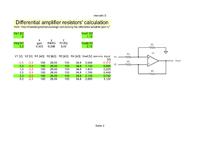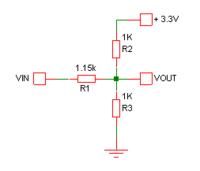edinburghtech
Junior Member level 2
Hi
I am designing a current steering DAC in which a current cell constitutes of a current source, cascode and differential pair. Digital input comes to the differential pair which causes the current to be channeled through either of the branches. At the moment the input of the differential pair swings from 0 to Vdd (3.3V). I would like to reduce this swing to 1V. Can someone please tell me a circuit topology which can convert 0 - 3.3V swing to 1.15 - 2.15 V swing
Thanks
Tech
I am designing a current steering DAC in which a current cell constitutes of a current source, cascode and differential pair. Digital input comes to the differential pair which causes the current to be channeled through either of the branches. At the moment the input of the differential pair swings from 0 to Vdd (3.3V). I would like to reduce this swing to 1V. Can someone please tell me a circuit topology which can convert 0 - 3.3V swing to 1.15 - 2.15 V swing
Thanks
Tech

